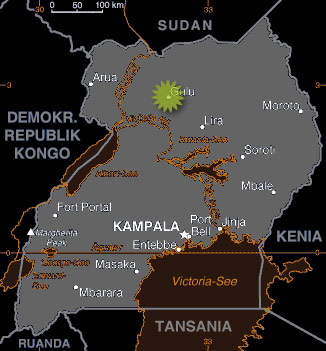Twenty three days until departure to Gulu. If you had followed this blog a year ago in the run up to Cairo, you would understand that I have a fascination with countdowns. Particularly at the end of the year, and particularly for adventures. This involves both. The previous week or so has not been spent idly – with emails of varying length traversing the continent to get arrangements confirmed.
It is worth quickly noting that journalism, especially the out-of-your-country kind, actually consists of a great deal more organising than you might initially expect. In planning the project, there were three areas that I was hoping to cover stories on: rehabilitation programs for women and former child soldiers, demining operations, and the experiences and opinions of South Sudanese refugees ahead of the 9 January referendum to divide Sudan.
I discovered that aid agencies are not the uncollaborative competitors that I had assumed they were, but that in many areas they do actually work together quite closely
Each of these, in their own way, has been a lesson in Internet research and writing email queries. Thanks in no small part to Claire, I discovered that aid agencies are not the uncollaborative competitors that I had assumed they were, but that in many areas they do actually work together quite closely. In the case of Gulu, there is a website for the coordination of NGO efforts in the region. It is impressive in its detail, even down to having minutes of coordination meetings and spreadsheets of contact details for people in the region. This, some determined Googling, plus help from Naomi (of TAZARA train fame) and her colleague Hope has meant that for the most part, the basics are in place to interview and tag along with a number of interesting people working in Gulu and surrounds. Insofar as I will be able to get online, you can expect updates from the field as frequently as I can put them together.
The first, and likely most in-depth, story that we will be working on is documenting the work of the Ugandan government and NGOs in the region in the rehabilitating women, former child soldiers and displaced communites in the years since the Lord’s Resistance Army left the area. At the high point of the violence, vast camps of Internally Displaced People (IDPs are essentially refugees who have not managed to cross an international boundary), formed around towns such as Gulu, seeking protection from the LRA. Since around 2008, many of these IDP camps have been disassembled, prompting a return by many communities to areas that had been left unoccupied for many years. We are hoping to look closely at the challenges of re-establishing physical and social communites that this return has raised. Part of undoing the damage inflicted on the people in the area is reintegrating former child soliders from the LRA back into their communities, and dealing with the post-conflict trauma of the many women and girls abducted and raped by LRA rebels.
Next, but related to the LRA once again, we are hoping to document the work done by demining teams around the nearby town of Kitgum. Part of the legacy of the war is a large amount of unexploded antipersonnel mines which have a devastating effect on communities returning and trying to access their land for agriculture and settlement. The work of mine clearance organisations assists in returning these areas to their owners and removing the danger of death and injury. It is slow and painstaking work and, particularly in the case of Northern Uganda, not well-covered outside of occasional NGO reports and articles.
Finally, north of Gulu lie camps for refugees from Southern Sudan. On the 9th of January next year, Sudan goes to a referendum, the consequence of which may be to see the country split into two and possibly ending the conflict that has raged in Southern Sudan for years now. If we can finalise our arrangements in time, we are hoping to be able to interview a range of voices in one of these camps about their levels of awareness of the referendum, their hopes for its outcome and their opinions on returning to Southern Sudan once the referendum has passed and if South Sudan becomes a country.
So if you were wondering where precisely I will be going and what exactly I am hoping to do, that is more or less it. There are also some ancillary stories I am hoping to put together; perhaps a travel piece for Brave New Traveler and a side documentary for the Rhodes journalism department on how journalists on an assignment like this make decisions on ideas of representation and choosing stories.But for the most part, the three main areas above will occupy most of our days and nights.
It feels good to be stepping out again, but this time to tell stories that are not simply my own travel narratives, but which are a part of bigger things. Things That Matter.
On a more personal note, I am still a little taken aback by how quickly the universe has pushed me into places I honestly never expected to be a little over a year ago. It feels good to be stepping out again, but this time to tell stories that are not simply my own travel narratives, but which are a part of bigger things. Things That Matter. It’s a topic for another post, but I found myself telling my brother yesterday that I have recently realised that it has been months since I last posted on this blog about a crisis of direction, about restlessly seeking a meaning for my life.
It seems that, for now, I have found the balance I was looking for when I stepped out to explore my continent a little over a year and a week ago.

